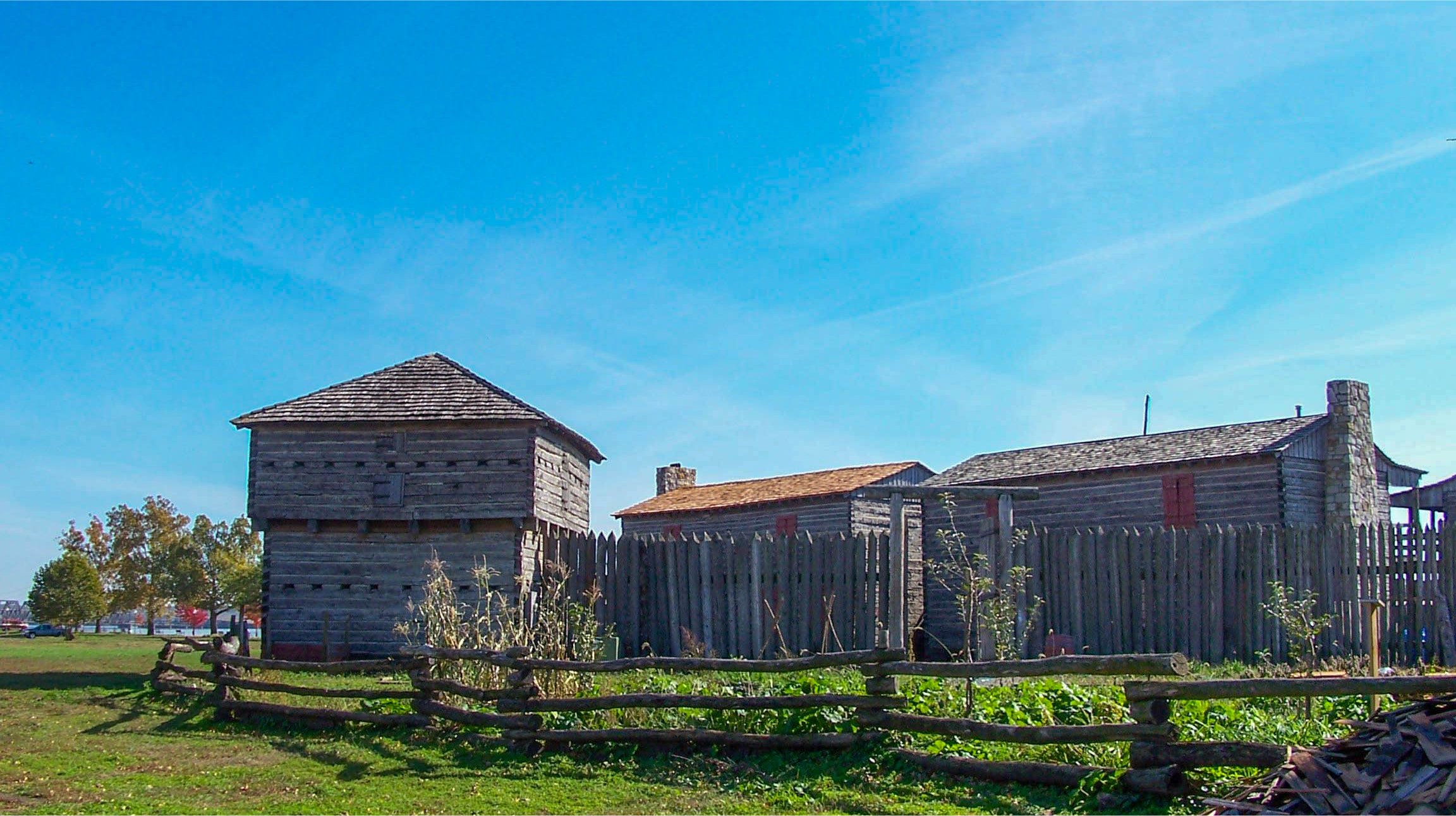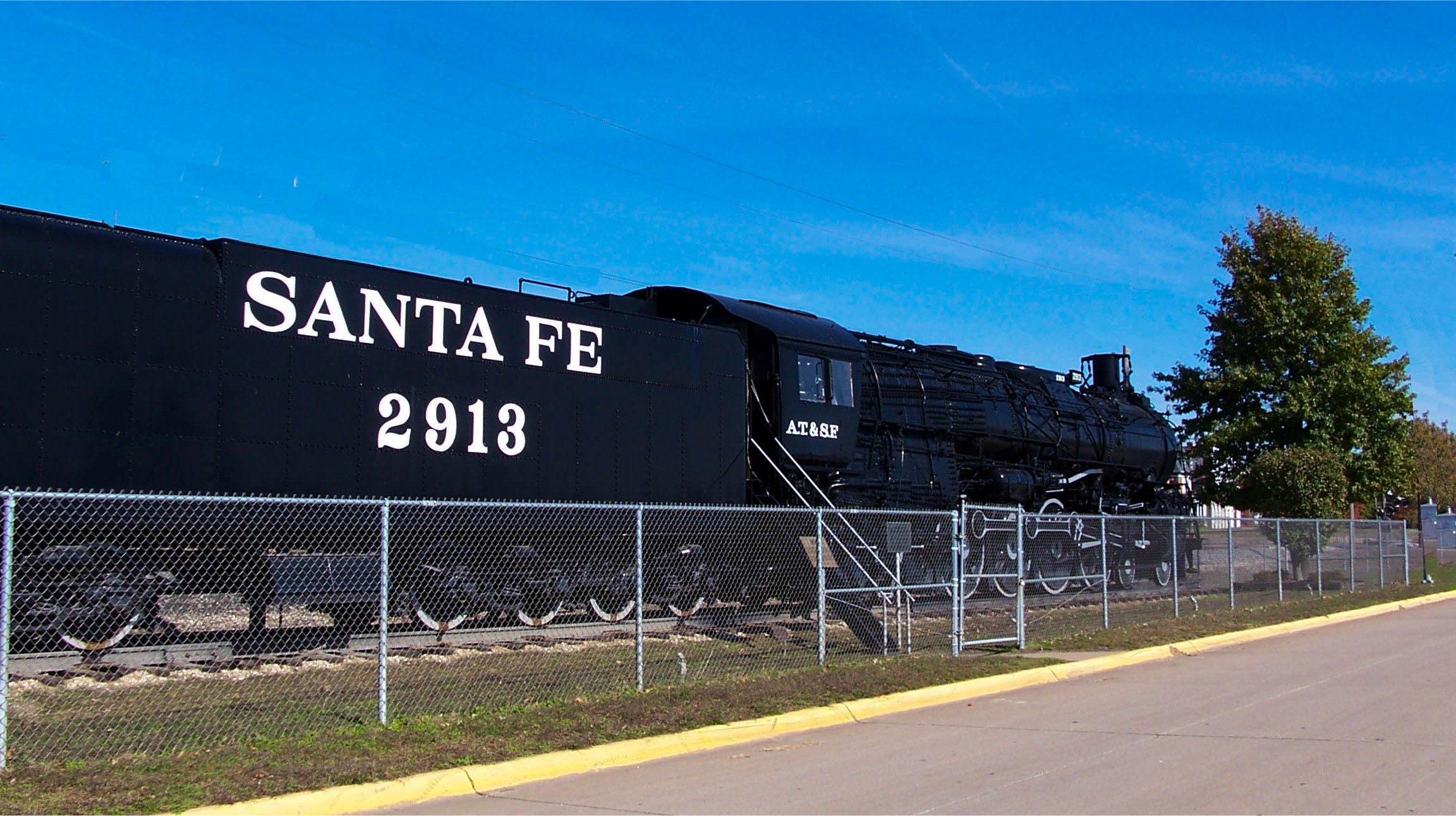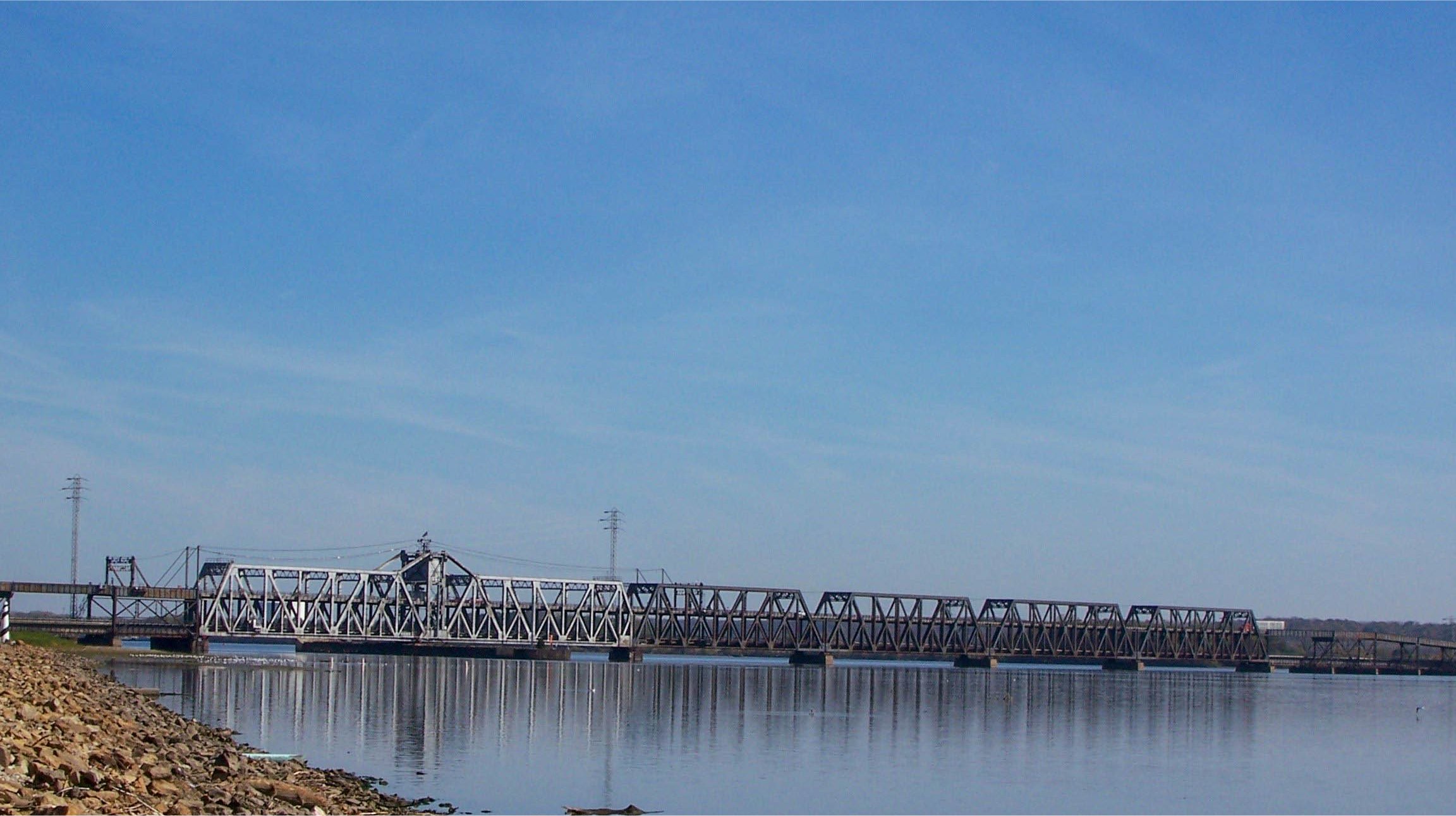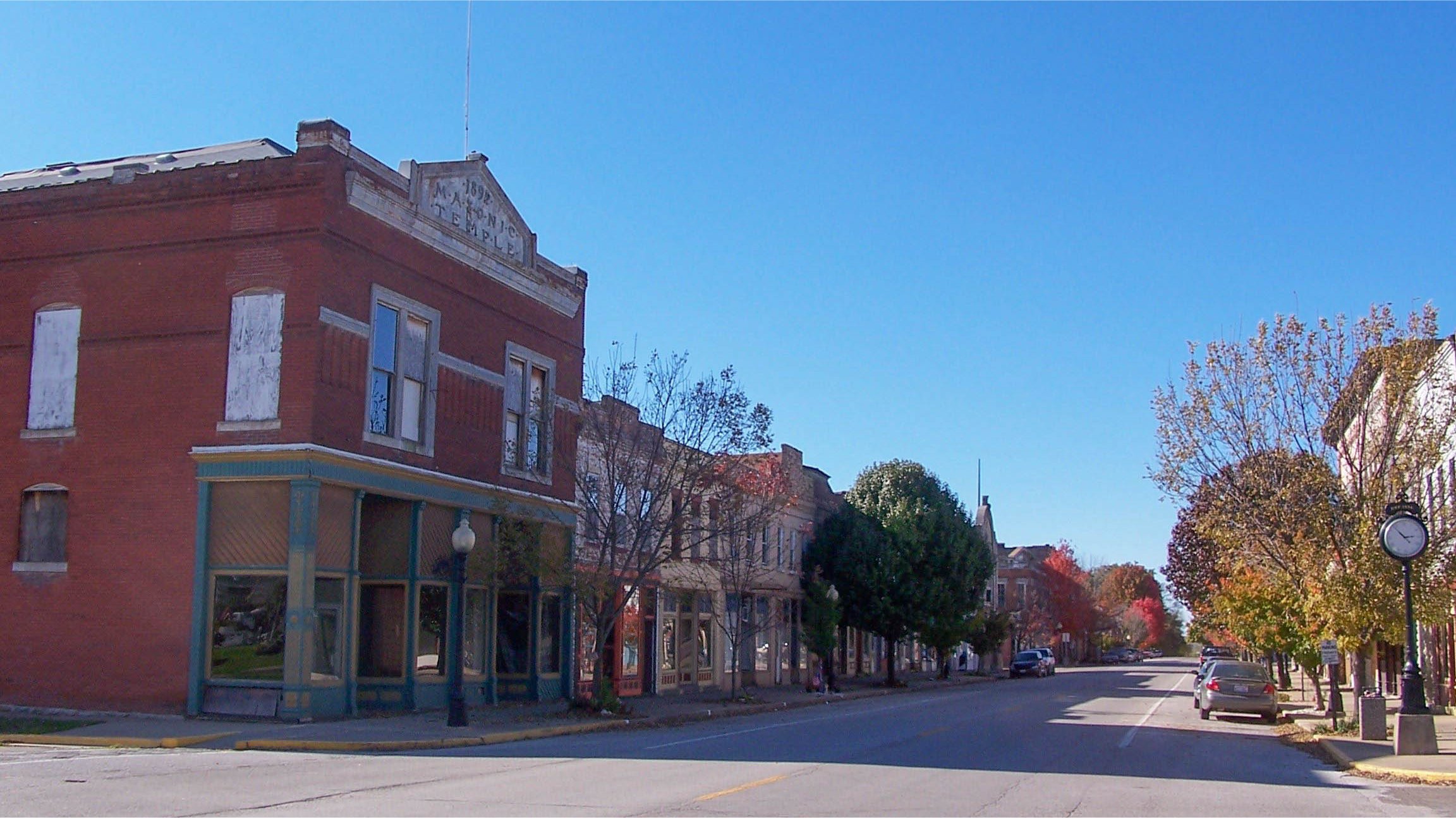Visitors Guide to Fort Madison
Lee County, Iowa
Old Fort Madison along the Mississippi River
Engine 2913
In 1808 the United States established Fort Madison, the first United States military post on the upper Mississippi River. The fort was built to protect the government "factory," or trading post, where area Sauk and Fox could exchange furs and lead for manufactured goods. The post was also intended to secure the American frontier in that region. Most of Native Americans in the area were friendly toward the fort and traded peacefully at the government factory. There were incidents when the fort was menaced by unfriendly Sauk, Fox), and Winnebago under the partial leadership of the noted Sauk warrior Black Hawk. Following the outbreak of the War of 1812 the fort was besieged by Black Hawk and his allies who were supported by the British agents. During the siege, the post commander ordered the burning of the factory, which was outside the fort, to prevent the besiegers from doing so on a day when west winds might carry burning debris to endanger the post buildings. Faced with constant harassment, Lt. Thomas Hamilton, the post commander, ordered the fort abandoned in November of1813. Under cover of darkness, the men of the garrison slipped away downriver in boats, leaving the fort engulfed in flames and only the chimneys remained. In 1908 the local DAR chapter erected a monument in the form of a chimney to mark the site of Blockhouse #1. In 1983 the city received the first of two government grants to reconstruct a full-scale replica of Old Fort Madison. Replicas of major buildings were erected in Riverview Park at a point near the actual site of the historic fort. Today, visitors can visit the reconstructed fort and watch living history demonstrations.
In 1832 a conflict between the Sauk and Fox and the United States erupted. The root of the conflict was the controversial 1804 Treaty of St. Louis which ceded the Sauk and Fox lands east of the Mississippi. A subsequent treaty in 1816 promised that the tribes could remain east of the Mississippi until the Americans needed the land. By 1829 most of the Sauk and Fox had already voluntarily moved west in the Iowa territory and the State of Illinois had decided it was time for the federal government to begin removing the remaining holdouts which included followers of the Sauk war chief Black Hawk, who never accepted the validity of the treaties. In 1830 in response to hostilities with the Dakota, Black Hawk moved his followers west of the Mississippi to aid the Sauk there. War between the Sauk and Dakota was averted when the Americans sent General Henry Atkinson with a force of 400 to Fort Armstrong on Rock Island. Armstrong and the Sauk chief Keokuk forced Black Hawk to agree not to cross back into Illinois. But in June of 1832 Blackhawk defiantly crossed the Mississippi with almost 2,000 Sauk and started the Black Hawk War. Black Hawk and his followers never received the support he expected from other native tribes and the British and the war ended with the American victory at the Battle of Bad Axe in August. On September 21, 1832, the Black Hawk War officially came to an end with a treaty approved at Fort Armstrong. In the treaty the Americans extracted an indemnity of a tract of land, commonly called the Black Hawk Purchase, extending along the Mississippi River on the west bank from the Missouri border nearly to Minnesota.
The Lone Chimney
General John H. Knapp is generally considered the first permanent settler in Fort Madison. Knapp served with the New York Militia during the War of 1812 who managed a coal mine and owned a hotel and store before moving out west in 1830. Knapp passed the ruins of Fort Madison on a riverboat trip north in 1832. Knapp bought a claim and built the first building in the area since the destruction of the old fort and used it as a supply store for the Native Americans. Knapp sold the store in late 1832 and moved to Quincy where his cousin Nathaniel Knapp operated a hotel. In early 1833 General Knapp returned to Fort Madison with Nathaniel. General Knapp built a log house on the exact site of the old fort using one of the old chimneys for his residence and erected a new store building and sent for his family who were in Pennsylvania. In late 1835 General Knapp built a large hotel that could accommodate fifty people called the Madison House. At about the same time Nathaniel also built a hotel called the Washington House. Both hotels prospered due to the influx of immigrants to the area. As many as 100 teams of oxen waited on the Illinois shore waiting to be ferried across the Mississippi on a flatboat ferry and many of the people waiting for the ferry stayed at the hotels.
In June of 1835 the two Knapps platted the town of Fort Madison with the first lots going up for sale early in the year 1836. Fort Madison was incorporated by an act of the Territorial Legislature of Wisconsin, as Iowa was not yet a state, on January 19, 1838. By 1938, a flourishing town of nearly six hundred inhabitants had developed, with a large proportion being enterprising merchants, mechanics, and manufacturers. 1938 saw the establishment of the first church and newspaper. In 1940 Fort Madison began construction on a courthouse to stop other Lee County communities from contesting the decision to make Fort Madison the county seat. Several towns including Keokuk and West Point were rivals in a contest to where the county seat would be located. The contest that was finally settled in 1847 when the Iowa Legislature granted Keokuk and Fort Madison concurrent jurisdiction making Lee County the only Iowa county with two county seats. The Greek Revival building with four large Tuscan columns of plastered brick was listed on the National Register of Historic Places in 1976. The Iowa State Penitentiary at Fort Madison was built in 1839 making it the first territorial prison and oldest penal institution west of the Mississippi. The prison served as a territorial prison for seven years before Iowa became a state. The original cell block is still in use, and three of the prison houses are on the National Register of Historic Places.
Fort Madison was a river town until in 1869 the Chicago, Burlington & Quincy Railroad connected Fort Madison into its system as part of a route between Burlington and Hannibal. The real transformation of Fort Madison into a railroad town came almost two decades later. Prior to the late 1880s the Santa Fe railroad system concentrated its efforts on rail lines that were west of the Missouri River. In 1886 the board of directors decided to expand eastward to Chicago in response to the plans of several eastern lines to extend their operations west of the Missouri River. To carry out this project the Chicago, Santa Fe and California Railway Company was incorporated in December of 1886. In 1887 the decision was made to route its main line from Chicago to the west coast through Fort Madison. A bridge across the Mississippi River at Fort Madison for the railroad was authorized by the U.S. Congress in March of 1887 and the nearly 3,000 foot bridge was completed by the end of the year.
Santa Fe Swing Span Bridge
In 1927 the Fort Madison Toll Bridge, also known as the Santa Fe Swing Span Bridge, replaced the inadequate single-track bridge. Rail traffic occupies the lower deck of the bridge, while two lanes of road traffic occupy the upper deck. It is widely considered the longest double-deck swing-span bridge in the world. About 75 to 90 trains including Amtrak's Southwest Chief cross the bridge in a typical day. The mission revival style Old Santa Fe Depot that was built in 1909 is now the home of the North Lee County Historical Museum. The museum complex, complete with Santa Fe Caboose #235, has exhibits on railroad history, firefighting lore, the state penitentiary, territorial and pioneer days, and houses an art gallery.
Preserving the past to build for the future is happening in all of Fort Madison. In the downtown area several blocks have been named to the National Register of Historic Places. The buildings may be old, but new businesses have taken up residence. Fort Madison’s local architecture has been highlighted in a self-guided tour brochure that covers nearly 100 Victorian-style homes. The brochure is provided by the Fort Madison Historic Preservation Commission. For information about the brochure call 319-372-7661. The Fort Madison community hosts a range of events throughout the year including historical adventures at Old Fort Madison and the Tri-State Rodeo in September.
www.fortmadison.com - This web site has detailed information about the town, its history, the things to do, and local events as well as information about the surrounding area.
















